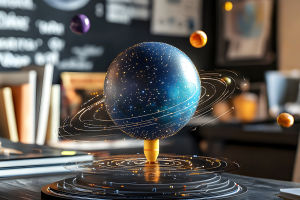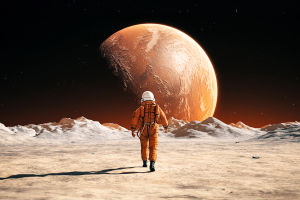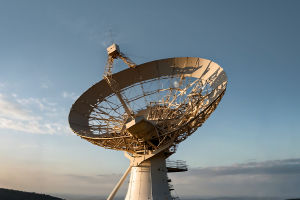At the beginning of our journey, Lykkers, have you ever looked up at the night sky and wondered how it all started?
Let's walk through the fascinating path of universe exploration together!
Looking Back: How Universe Exploration Began
Long ago, we humans relied on the stars to guide our daily lives, farming schedules, and even sacred rituals. Around 3000 BCE, the ancient Egyptians observed the rising and falling of the Nile River and the appearance of Sirius to create one of the earliest solar calendars. As time moved forward, our tools and understanding evolved.
In 1609, Galileo used a homemade telescope to observe the heavens, revealing mountains and craters on the Moon and the Sun's rotation. Then in 1687, Newton's publication of Mathematical Principles of Natural Philosophy introduced the three laws of motion and the law of universal gravitation. Thanks to these milestones, the universe became something we could study and understand, rather than just admire.
The Rise of Modern Space Exploration
The 1950s marked a new chapter—our entrance into the Space Age. In 1957, the first artificial satellite was launched into space, opening the door to a new era. We didn't stop there. In 1969, America’s Apollo 11 mission successfully landed humans on the Moon for the first time. Meanwhile, China's space program grew rapidly.
By 2022, Shenzhou-14 and Shenzhou-15 successfully docked in orbit, allowing astronauts to meet in space—an important milestone in the construction of China's own space station.
Latest Breakthroughs: New Discoveries in Space
When it comes to lunar studies, we’ve made exciting strides. China's Chang'e 5 mission brought back lunar soil, revealing for the first time the existence of molecular water, natural glass fibers, and naturally formed few-layer graphene. It also uncovered rare minerals like bluelite copper and a brand-new mineral named "Chang'e Stone." Studies of these samples suggest that some moon rocks are around 3.9 billion years old, giving us new insights into the Moon's volcanic and impact history.
Challenges We Must Overcome
Despite our remarkable achievements, space exploration is still filled with challenges. Long-distance missions demand solutions for astronaut life support, radiation protection, and maintaining essential systems. Deep space missions also have to tackle communication delays, energy supply issues, and accurate navigation. Plus, the high cost and complex management of space projects continue to be big hurdles. It's a tough road, but one worth traveling.
What the Future Holds
Looking ahead, we have every reason to be excited. With continuous technological breakthroughs, we may soon reach farther into deep space and explore other planets and galaxies more thoroughly. The future might even include thriving industries in space tourism and resource development. What's more, international collaboration is likely to become even stronger, as we unite our strengths to push the boundaries of human knowledge and reach.
Common Questions About Space Exploration
1. Why do we explore the universe?
- To understand its origins, find potential life beyond Earth, and drive technological innovation that benefits life here on Earth.
2. How does space exploration impact our daily lives?
- Technologies like satellite communications, weather forecasting, and GPS navigation all stem from space exploration, making our lives better and safer.
3. How are astronauts protected in space?
- Special spacecraft designs, radiation shields, carefully controlled environments, and constant monitoring help keep astronauts safe.
4. Is there other life in the universe?
- So far, no direct evidence, but considering how vast space is, it's very possible. That’s why we keep searching!
5. Where does the funding come from?
- Mostly from government budgets, with support from businesses and private donations as well.
6. What happens to astronauts’ bodies during long missions?
- They can experience muscle weakening and changes in cardiovascular function—but careful exercise and protective measures help counteract these effects.
7. How do we deal with space junk?
- By designing recyclable spacecraft and developing space debris cleanup technologies.
8. Will we live on other planets someday?
- It’s possible! But there are still many technological and environmental challenges to solve first.
9. Does space exploration harm Earth’s environment?
- The impact is relatively small, and we’re developing better technologies to minimize any environmental footprint.
10. How can everyday people get involved?
- By staying informed, joining science events, supporting research, or even joining future space tourism opportunities!
Final Words for Lykkers
Dear Lykkers, no matter how big the universe may seem, our passion and curiosity can always reach it. Let's continue believing in ourselves, striving for our dreams, and finding light even in the ordinary. Every small step we take today builds a brighter tomorrow—together, we are unstoppable!


